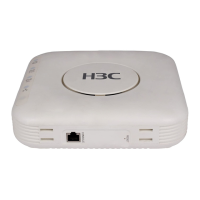133
DNS configuration
Overview
Domain Name System (DNS) is a distributed database used by TCP/IP applications to translate domain
names into corresponding IP addresses. With DNS, you can use easy-to-remember domain names in
some applications and let the DNS server translate them into correct IP addresses.
There are two types of DNS services, static and dynamic. After a user specifies a name, the device checks
the local static name resolution table for an IP address. If no IP address is available, it contacts the DNS
server for dynamic name resolution, which takes more time than static name resolution. Therefore, some
frequently queried name-to-IP address mappings are stored in the local static name resolution table to
improve efficiency.
Static domain name resolution
Configuring static domain name resolution is to set up mappings between domain names and IP
addresses manually. IP addresses of the corresponding domain names can be found in the static domain
resolution table when you use applications such as telnet.
Dynamic domain name resolution
Dynamic domain name resolution is implemented by querying the DNS server.
NOTE:
For more information about DNS, see
H3C WA Series Access Points Layer 3 Configuration Guide
.
Recommended configuration procedure
Configuring static name resolution table
Ste
Remarks
Configuring static name resolution table
Required
By default, no host name-to-IP address mappings are
configured in the static domain name resolution table.

